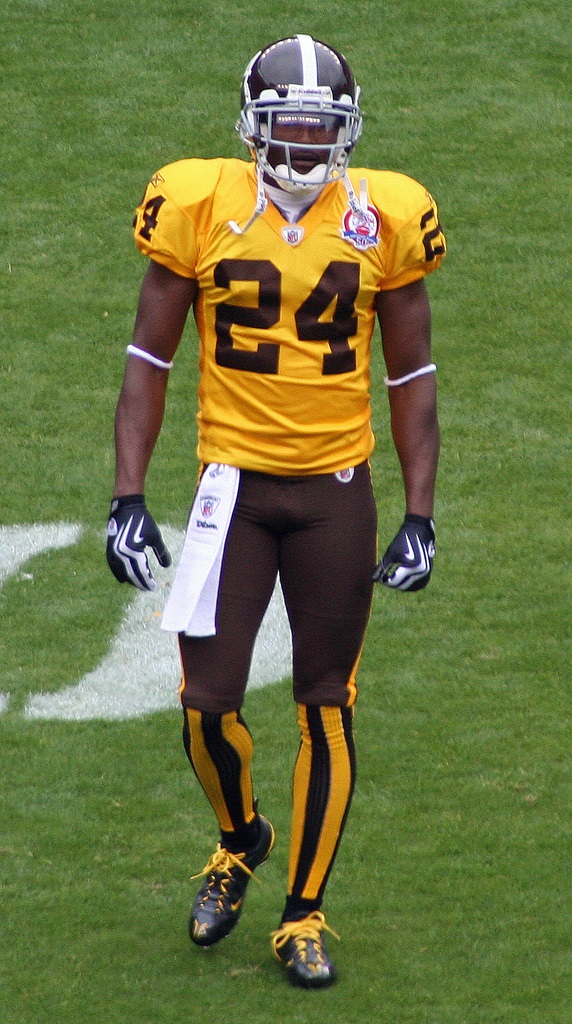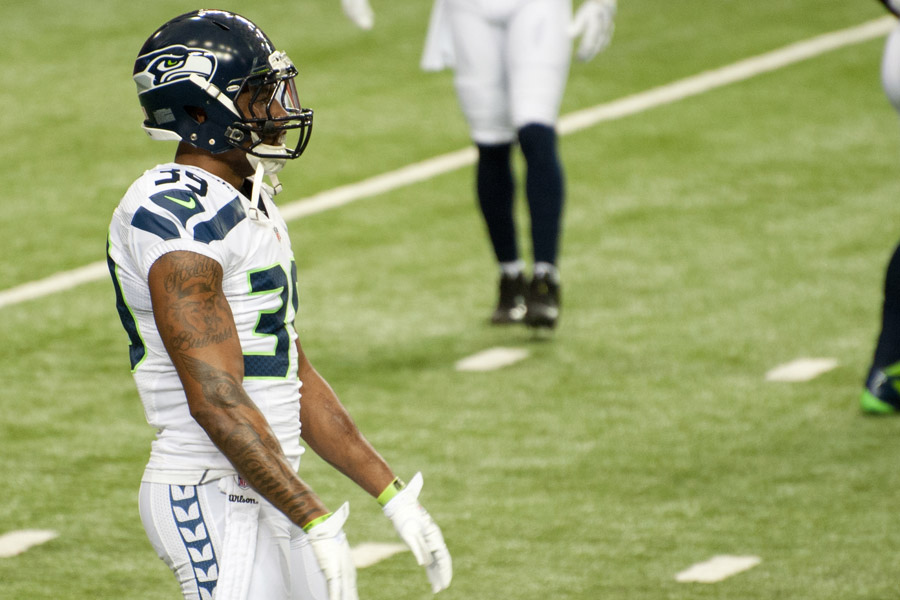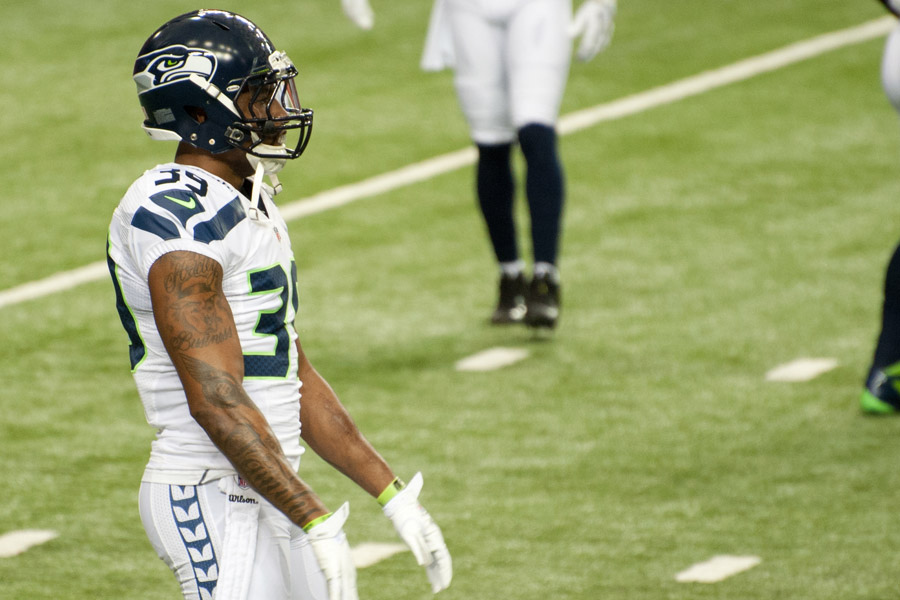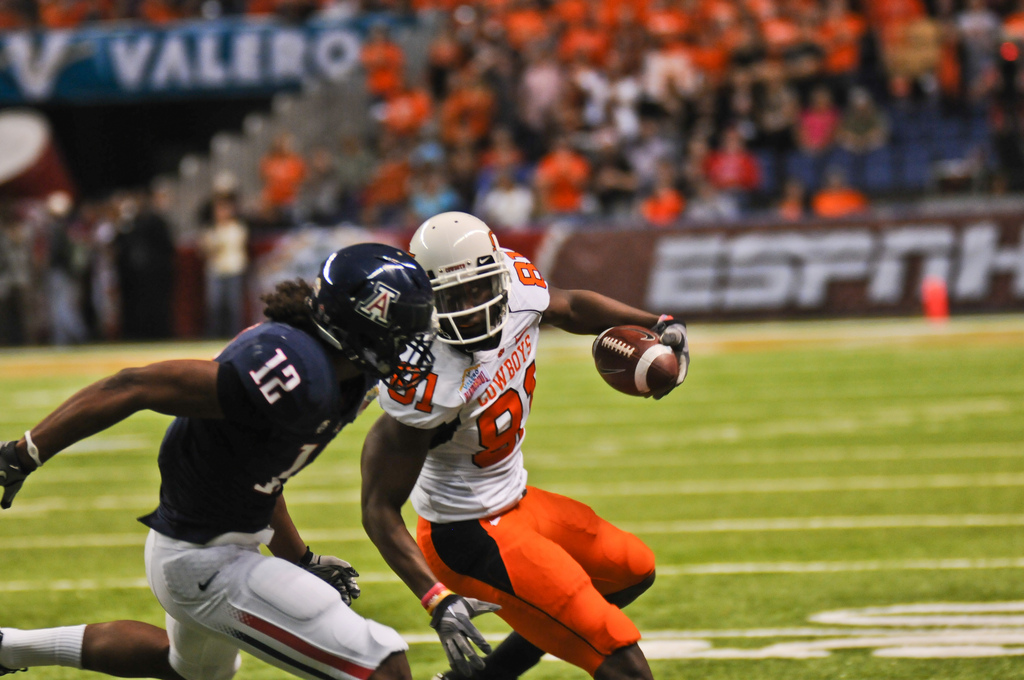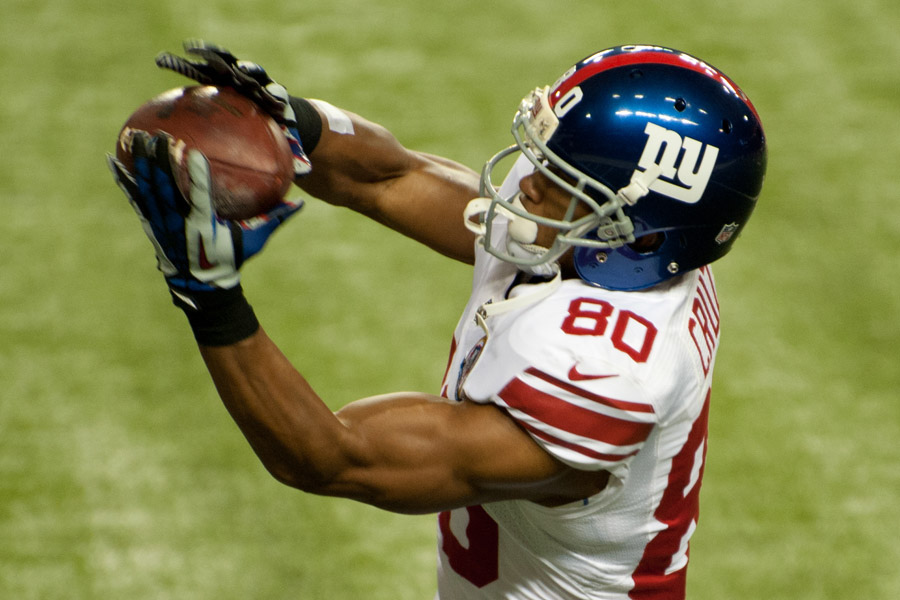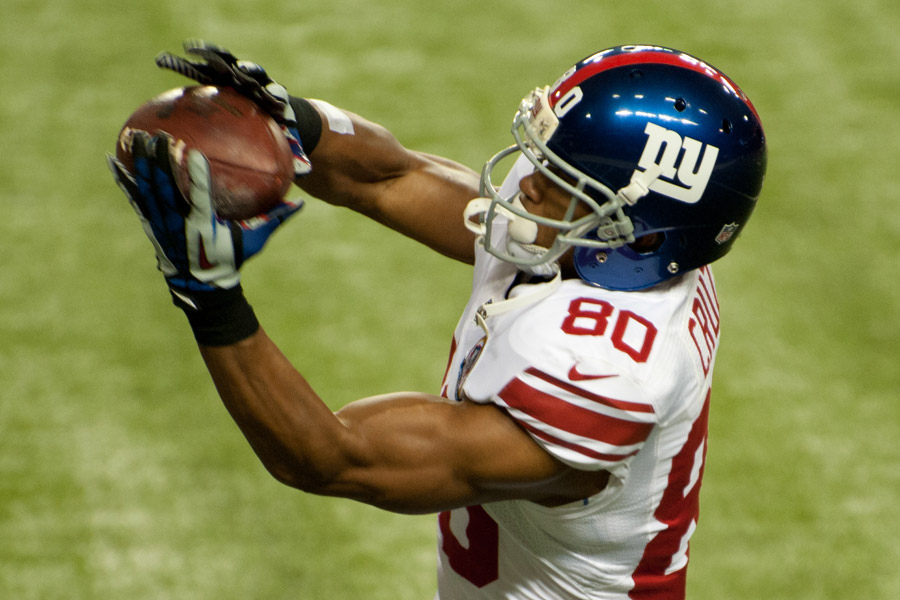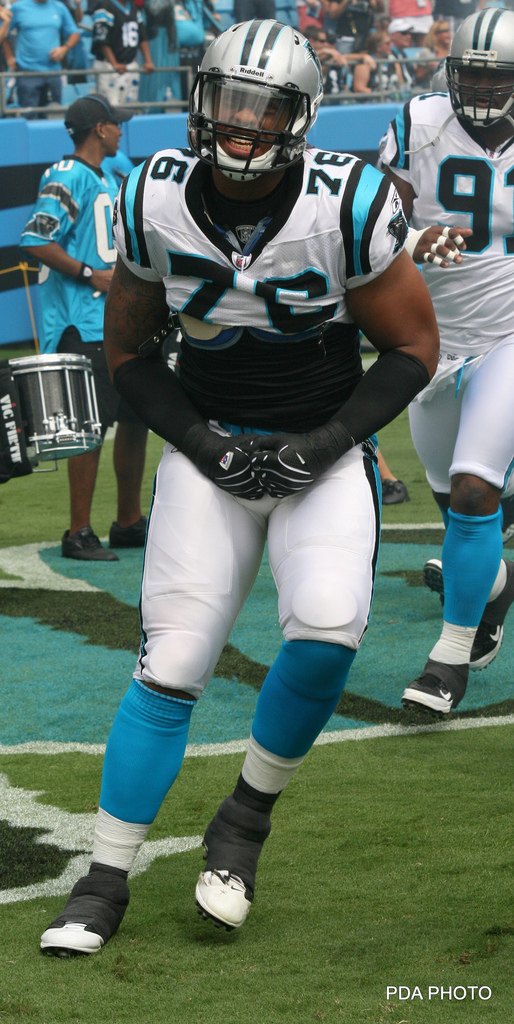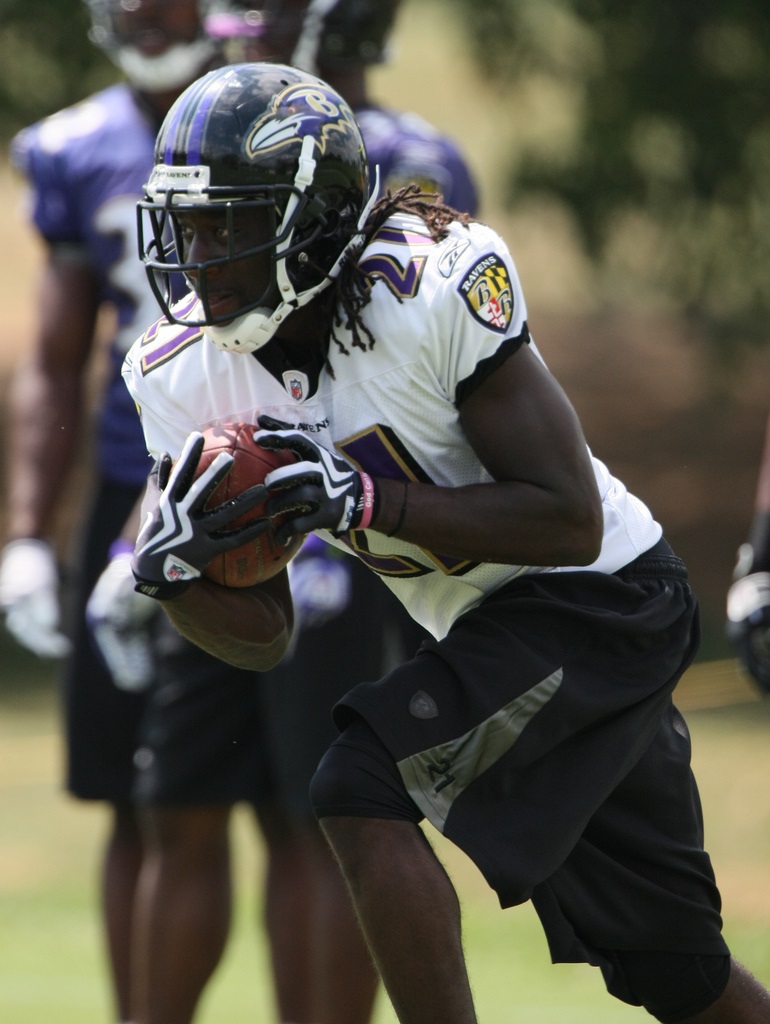
Depending on how you found the RSP blog, you either know me as a football talent evaluator or a fantasy football writer. Studying NFL prospects has helped me understand why a fantasy draft approach like the Upside Down Strategy has value – even in a year where there appears to be a lot of depth at receiver and quarterback. And I think it’s refining my analysis of these positions.
Last year, I learned a little more about the Fantasy Pros Accuracy rankings methodology and resolved to work a little harder on delivering better rankings as opposed to focusing mostly on over-arching strategies. I learned this weekend that Fantasy Pros accuracy analysis listed my quarterback rankings No.1 and my wide receiver rankings No.8 out of 109 fantasy writers in 2012. A lot of the credit goes to the work I do here.
As the NFL acquires new blood, I’m becoming more familiar with them because of the analysis I perform for the Rookie Scouting Portfolio. Today, I’m providing a sample section from the 2013 Rookie Scouting Portfolio pre-draft publication. This is just a small taste of the 260-page guide that also has a more than 1000 pages – yes, that number is correct – of individual scouting reports and play-by-play notes for those of you who wish to wade in the detail. Then there’s the post-draft analysis that is included with the package that my readers say is worth the $19.95 you pay for both.
If you are a fantasy owner – dynasty or re-draft – and you haven’t downloaded the 2013 Rookie Scouting Portfolio, you’re cheating yourself. Plus, 10 percent of each sale goes to Darkness to Light, an organization that provides community training to address and prevent sexual abuse.
Overview and Fantasy Impact of the WR Position
This year, 5’8” 174-pound Tavon Austin is considered by many a first-round lock. There hasn’t been a receiver this short picked in the first round of an NFL Draft in at least 25 years. It’s a sign that the NFL is broadening its horizons when it comes to offense.
The success of Percy Harvin and Randall Cobb has helped – both were players without a traditional position and no bigger than 5’11”, 195 pounds. Although Marvin Harrison – a 6’0”, 175-pound receiver – was a first-round pick in 1996, the fact that teams are now spending high picks on shorter and lighter receivers with greater frequency is a change. The Lions and and Chiefs used second-round picks (Top 45 overall) on lightweights Titus Young (174 lbs.) and Dexter McCluster (165 lbs.), which is validation that what is an acceptable physical prototype is changing.
Young and McCluster have not worked out like Harvin and Cobb, but physical ability hasn’t been the root cause. Teams are taking notice and now we’re looking at the possibility of Austin getting selected within the first 25 picks. A lot has changed in a short period of time.
However, one thing hasn’t changed about the position. Receiver remains a difficult position to play in the NFL. Even with the cross-pollination of pro-style and spread offenses in the NFL and college football, changes in rules that favor the passing game, and the use of routes like the back-shoulder fade, there’s a canyon-sized gap in what constitutes good play in the college and pro games due to scheme complexity, speed of the game, a higher bar for precision, and the toll of a longer season.
Regardless of height, weight, or style of skill set, it’s a good idea not to count on top-tier production from rookie wide receivers yet remain open to the possibility of three of four players who might reach this summit based on surrounding talent.
A good example is the 2012 class. While not as dynamic out the gate as the crew from 2011 – a class that featured top fantasy scorers A.J. Green (14th), Julio Jones (17th), and Torrey Smith (23rd) – there were still six receivers with at least 500 yards. This total matched the 2011 group.
The marquee producers weren’t as productive, but the 2012 class showed plenty of depth and promise. Justin Blackmon (29th), T.Y. Hilton (31st), and Josh Gordon (40th) were viable No.3 fantasy wide receivers in many leagues and Kendall Wright (45th) and Chris Givens (58th) provided weeks of valuable flex production.
It’s still rare to see rookie receivers post starting-caliber fantasy production, but the “noted exceptions” continues to grow to the point that it’s becoming more difficult to use that label in the scope of recent history. We’re gradually entering a new era and it’s becoming commonplace to count on 3-4 rookie receivers to get the job done.
Top 12 Rookie Yardage Seasons for a Wide Receiver
|
Last Name |
First Name |
Yr. |
Team |
G |
Rec |
Rec Yd |
Rec Td |
| Groman | Bill |
1960 |
TEN |
14 |
72 |
1473 |
12 |
| Boldin | Anquan |
2003 |
ARI |
16 |
101 |
1377 |
8 |
| Moss | Randy |
1998 |
MIN |
16 |
69 |
1313 |
17 |
| Howton | Billy |
1952 |
GB |
12 |
53 |
1231 |
13 |
| Clayton | Michael |
2004 |
TB |
16 |
80 |
1193 |
7 |
| Glenn | Terry |
1996 |
NE |
15 |
90 |
1132 |
6 |
| Brooks | Billy |
1986 |
IND |
16 |
65 |
1131 |
8 |
| Hill | Harlon |
1954 |
CHI |
12 |
45 |
1124 |
12 |
| Givins | Ernest |
1986 |
TEN |
15 |
61 |
1062 |
3 |
| Green | A.J. |
2011 |
CIN |
15 |
65 |
1057 |
7 |
| Galloway | Joey |
1995 |
SEA |
16 |
67 |
1039 |
7 |
| Colston | Marques |
2006 |
NO |
14 |
70 |
1038 |
8 |
Over 50 percent of the names on this list were drafted after 1995 and that also includes 16 of the top 30 rookie performances. One third of these performances have come since I began writing the Rookie Scouting Portfolio. We’re not going to see five to seven rookies become fantasy starters every year unless there’s a slew of injuries to veterans across the league, but expecting two players to play like starters and two more to provide good support for NFL and fantasy rosters is reasonable.
Dynasty and Redraft League Advice
Dynasty leaguers need to be patient when selecting a receiver in the opening rounds of a draft – even if that player has “instant impact” written all over him. It often takes a receiver two to four years to develop into an NFL starter.
In most situations, redraft owners would be best advised to use caution when drafting a rookie receiver. My general advice is to wait until late—if you pick one at all. Some of the better options (Torrey Smith, T.Y. Hilton, and Josh Gordon) will be available on the waiver wire. Learning enough about their potential in a publication like this one should put you in position to capitalize on an opportunity to add value to your roster during the season.
I say this annually, but feel the need to continue restating it: It is no surprise that the Rookie Scouting Portfolio’s evaluation method yields lower scores for wide receivers across the board than running back due to what is typically an extended adjustment period.
Other than quarterback, receivers require more significant coaching than any other position: blocking, route running, releases against press coverage, and route adjustments based on the play call are all common issues rookies face. The majority of college offenses only need to exploit a receiver’s athletic talents to create a successful passing game.
Timing routes such as skinny posts, deep posts, and deep ins aren’t as common in college ball as are hitches, streaks, fades, and slants—routes that allow a receiver to out-run, out-jump, or out-muscle his opponent and rely less on timing and technique. Athleticism is still important, but timing, technique, and strategy separate former college stars from quality pros.
There are a number of receivers with grades in the 60s on my 100-point scale who can develop into quality contributors at the next level.
This Class: The 10,000-Ft. View
Last year I said there were 30 receivers with talent to make a roster; 12-15 with starter potential; and 4-6 who could become high-end producers.
This year I think there are 45 receiver with talent to make a roster; 20 with starter potential in the next 3-4 years; and as crazy as this sounds, 15 players with 1000-yard potential. This class as depth, breadth, and special talent.
As with every class, there will be players who don’t play to expectation and players who will wildly exceed them. I don’t expect all of my top 15 players to have consistent 1000-yard seasons; my job is to give you an idea of who can be good and why. At this early vantage point, 2013 is a great class for drafting receivers.
How to Best Use My Rankings for Fantasy Drafts
Fortunately for you, there two sets of rankings at your disposal when you purchase the RSP: the April pre-NFL draft rankings that weigh heavily towards talent and the May post-draft update that factors both talent and team.
The pre-NFL draft rankings in this publication are player based on how I perceive his technique, talent, athleticism, and potential for growth. I do this with a variety of analysis methods – none of them have to do with where I think a player might be drafted.
I know that some plays I rank high than the norm aren’t realistic short-term values:
- Cincinnati’s Kenbrell Thompkins might be a late-round pick at best.
- Marquess Wilson cost himself a second or third-round selection when he singled out his coach and quit the Washington State football team.
- Marlon Brown tore his ACL this year.
Evaluating talent and evaluating where in the draft – if at all – to invest in that talent are two different processes. This is a long-term value to you, because you’ll get my initial take on the player without factoring business considerations that can cloud the issue and then an adjusted prognosis.
If your rookie draft take place before the NFL Draft, I often note if I believe I have a player high or normal than the consensus so you can make informed decisions with where to adjust my rankings into a draft board that suits your needs.
If have a player ranked sixth at his position but he’s considered a fifth-round value, I recommend you consider that player undervalued for fantasy purposes. You can wait to acquire him later. In some leagues it might be prudent not to draft the player at all because he’ll be available as a free agent and you can track his progress without using a roster spot.
In some situations you’ll have to decide whether or not you agree with my assessment of the player’s talent or value him according to his draft position and opportunity with his new team.
Explanation of the “Ceiling Score”
The Ceiling Score is what I believe the player’s potential checklist score would be if he improved upon the skills and techniques from the RSP scoring checklist that I think he is capable of addressing. The closer the player’s actual checklist score is to his ceiling, the closer he is to maximizing his abilities.
A player with a low checklist score but a high ceiling score is likely a project or a boom-bust prospect. These players have entered the highest level of football with a lot to learn. Some players view this transition to the NFL as an opportunity to have fewer distractions from their development plan. Others find even more opportunities for distraction now that they are free from the constraints of an hourly schedule that universities impose on them.
Rookie Productivity – A Historical Perspective
There’s not much of a gap in production between receivers drafted in the first two rounds over the past seven years. I believe on some level this indicates that NFL teams often grade players they drafted in the second round as first-round talents. I also think they regard second-round picks as players they expect to start early.
In hindsight, what drives production is targets. If a receiver is generating a high level of targets, his quarterback trusts him and he’s reliable to generate receptions, yardage, and touchdowns. Common sense. If a rookie receiver earns a starting job in a passing offense with an NFL starting quarterback with just average ability, there’s little reason to avoid selecting him in fantasy drafts if we can safely assume he’s going to see a steady share of targets.
Skill Breakdowns
The Rookie Scouting Portfolio checklists are designed to assess whether a player possesses a baseline physical skill or technique as defined in the glossary of the publication. What it does not do is differentiate how much or little of that technique each player has. The skill breakdown reports are an avenue to explore these comparisons. This is a more subjective process that distills the notes taken in the profiles section of the game analysis research tool.
Improvement Spectrum or “Ease of Fix” for Wide Receiver Skill Sets
This year, I am including my thoughts on a player’s potential to improve his skills within each category. It’s important to remember that athletes often enter their prime in their mid-to-late twenties, which is a attributable to a combination of increased physical, technical, and conceptual skill.
“Ease of Fix”
The style of type that I used for each name in these categories indicates a prospect’s potential to improve within these skill sets:
- Normal Type: Little to no change projected as this player transitions to the NFL.
- Easy Fix: These skills can improve with ease to moderate ease if the player makes the effort.
- Hard Fix: These skills typically take a great effort to address, if possible to address at all.
- Bad Habits: These players have bad habits they need to unlearn – a difficult transition, at best.
· Underrated or Underrated: Underrated aspect of player’s game or underrated with more opportunity to improve.
The subheadings under each skill table listed below should be reasonably self-explanatory, but here’s a quick breakdown.
- Star Caliber: A level of skill that rivals the best in the game at his position.
- Starter Caliber: A level of skill commensurate with a full-time starter at his position.
- Committee Caliber: A baseline level of skill for a player to contribute productively in an offense.
- Reserve Caliber: These players lack some amount of technique or athleticism to consistently be productive, but the skill is good enough to contribute to a team.
- Free Agent: These players lack the minimum skill in a given area to make a team if evaluated strictly by this single component.
- Deficient: The player’s skill set is so lacking that they aren’t likely to receive interest from a team until it improves to a at least a free agent level.
Separation
The term encompasses the skills and techniques involved with gaining distance from an opponent assigned to coverage. Two contributing factors are speed and acceleration. Some receivers have the speed to get behind a defense even when the defenders are giving a cushion of 8-10 yards. Others are long-striders that build up speed and then there are receivers that aren’t particularly fast over a longer distance, but their initial quickness is so good that it catches faster defenders off guard and out of position. However, there are rarely players fast enough to get consistent separation by running in a straight line. The most important way to get consistent separation in the NFL is to win against press coverage. This involves a variety of techniques a receiver uses with his hands and feet that he mixes and matches to get into his route.
NOTE: THIS REPORT BELOW IS ONLY CATEGORIZING PLAYERS BY ONE SPECIFIC SKILL SET AND NOT THEIR OVERALL GAME.
For even more analysis of skill players in this year’s draft class, download the 2013 Rookie Scouting Portfolio available now. Better yet, if you’re a fantasy owner the Post-Draft Add-on comes with the 2013 RSP at no additional charge. Best, yet, 10 percent of every sale is donated to Darkness to Light to combat sexual abuse. You can purchase past editions of the Rookie Scouting Portfolio for just $9.95 apiece.






